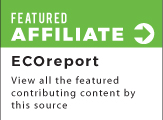

In recent decades, the plight of Atlantic cod off the coast of New England has been front-page news. Since the 1980s in particular, the once-seemingly inexhaustible stocks of Gadus morhua– one of the most important fisheries in North America — have declined dramatically.
In 2008, a formal assessment forecasted that stocks would rebound, but by 2012, they were once again on the verge of collapse. Two years later, the National Oceanic and Atmospheric Administration instituted an unprecedented six-month closure of the entire Gulf of Maine cod fishery to allow stocks to recover.
While overfishing is one known culprit, a new study co-authored by researchers at UC Santa Barbara and Columbia University finds that the climatological phenomenon known as the North Atlantic Oscillation (NAO) is also a factor. And it contributes in a predictable way that may enable fishery managers to protect cod stocks from future collapse. The group’s findings appear in the journal PLOS ONE.
“In the 1980s, the North Atlantic was stuck in a positive phase of NAO,” said lead author Kyle Meng, an economist at UCSB’s Bren School of Environmental Science Management. “We show not only that positive NAO conditions diminish a few consecutive cohorts of cod larvae but also that this effect follows a cohort as it matures.”
The NAO is a periodic climatic phenomenon that, like El Niño, causes changes in water temperatures, although the mechanism is different and the NAO affects the North Atlantic rather than the Pacific. Also like El Niño, the NAO may be affected in terms of both strength and frequency by climate change. The researchers found that, since 1980, NAO conditions have accounted for up to 17 percent of the decline in New England cod stocks.
Continue reading at EurekAlert!
Atlantic cod via Dieter Craasmann / NOAA
Terms of Use | Privacy Policy
2016©. Copyright Environmental News Network




